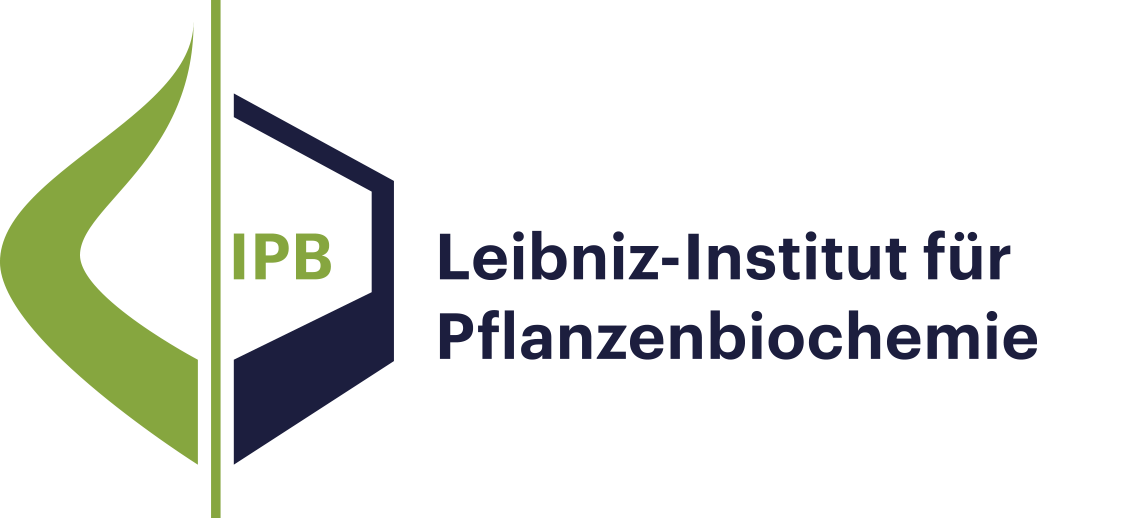Publikationen - Molekulare Signalverarbeitung
- Ergebnisse als:
- Druckansicht
- Endnote (RIS)
- BibTeX
- Tabelle: CSV | HTML
Publikation
Publikation
Publikation
Diese Seite wurde zuletzt am 15 Aug 2012 geändert.
Leitbild und Forschungsprofil
Molekulare Signalverarbeitung
Natur- und Wirkstoffchemie
Biochemie pflanzlicher Interaktionen
Stoffwechsel- und Zellbiologie
Unabhängige Nachwuchsgruppen
Program Center MetaCom
Publikationen
Gute Wissenschaftliche Praxis
Forschungsförderung
Netzwerke und Verbundprojekte
Symposien und Kolloquien
Alumni-Forschungsgruppen
Publikationen
Publikationen - Molekulare Signalverarbeitung
Publikation
Jasmonates are lipid mediators that control defence gene expression in response to wounding and other environmental stresses. These small molecules can accumulate at distances up to several cm from sites of damage and this is likely to involve cell‐to‐cell jasmonate transport. Also, and independently of jasmonate synthesis, transport and perception, different long‐distance wound signals that stimulate distal jasmonate synthesis are propagated at apparent speeds of several cm min–1 to tissues distal to wounds in a mechanism that involves clade 3 GLUTAMATE RECEPTOR‐LIKE (GLR) genes. A search for jasmonate synthesis enzymes that might decode these signals revealed LOX6, a lipoxygenase that is necessary for much of the rapid accumulation of jasmonic acid at sites distal to wounds. Intriguingly, the LOX6 promoter is expressed in a distinct niche of cells that are adjacent to mature xylem vessels, a location that would make these contact cells sensitive to the release of xylem water column tension upon wounding. We propose a model in which rapid axial changes in xylem hydrostatic pressure caused by wounding travel through the vasculature and lead to slower, radially dispersed pressure changes that act in a clade 3 GLR‐dependent mechanism to promote distal jasmonate synthesis.
Publikation
The INDOLE-3-BUTYRIC ACID RESPONSE5 (IBR5) gene encodes a dual specificity phosphatase that regulates plant auxin responses. IBR5 has been predicted to generate two transcripts through alternative splicing, but alternative splicing of IBR5 has not been confirmed experimentally. The previously characterized ibr5-1 null mutant exhibits many auxin related defects such as auxin insensitive primary root growth, defective vascular development, short stature and reduced lateral root development. However, whether all these defects are caused by the lack of phosphatase activity is not clear. Here we describe two new auxin insensitive IBR5 alleles, ibr5-4, a catalytic site mutant, and ibr5-5, a splice site mutant. Characterization of these new mutants indicates that IBR5 is post-transcriptionally regulated to generate two transcripts, AT2G04550.1 and AT2G04550.3, and consequently two IBR5 isoforms, IBR5.1 and IBR5.3. The IBR5.1 isoform exhibits phosphatase catalytic activity that is required for both proper degradation of Aux/IAA proteins and auxin-induced gene expression. These two processes are independently regulated by IBR5.1. Comparison of new mutant alleles with ibr5-1 indicates that all three mutant alleles share many phenotypes. However, each allele also confers distinct defects implicating IBR5 isoform specific functions. Some of these functions are independent of IBR5.1 catalytic activity. Additionally, analysis of these new mutant alleles suggests that IBR5 may link ABP1 and SCFTIR1/AFBs auxin signaling pathways.
Publikation
Wound responses in plants have to be coordinated between organs so that locally reduced growth in a wounded tissue is balanced by appropriate growth elsewhere in the body. We used a JASMONATE ZIM DOMAIN 10 (JAZ10) reporter to screen for mutants affected in the organ-specific activation of jasmonate (JA) signaling in Arabidopsis thaliana seedlings. Wounding one cotyledon activated the reporter in both aerial and root tissues, and this was either disrupted or restricted to certain organs in mutant alleles of core components of the JA pathway including COI1, OPR3, and JAR1. In contrast, three other mutants showed constitutive activation of the reporter in the roots and hypocotyls of unwounded seedlings. All three lines harbored mutations in Novel Interactor of JAZ (NINJA), which encodes part of a repressor complex that negatively regulates JA signaling. These ninja mutants displayed shorter roots mimicking JA-mediated growth inhibition, and this was due to reduced cell elongation. Remarkably, this phenotype and the constitutive JAZ10 expression were still observed in backgrounds lacking the ability to synthesize JA or the key transcriptional activator MYC2. Therefore, JA-like responses can be recapitulated in specific tissues without changing a plant’s ability to make or perceive JA, and MYC2 either has no role or is not the only derepressed transcription factor in ninja mutants. Our results show that the role of NINJA in the root is to repress JA signaling and allow normal cell elongation. Furthermore, the regulation of the JA pathway differs between roots and aerial tissues at all levels, from JA biosynthesis to transcriptional activation.
Diese Seite wurde zuletzt am 15 Aug 2012 geändert.

